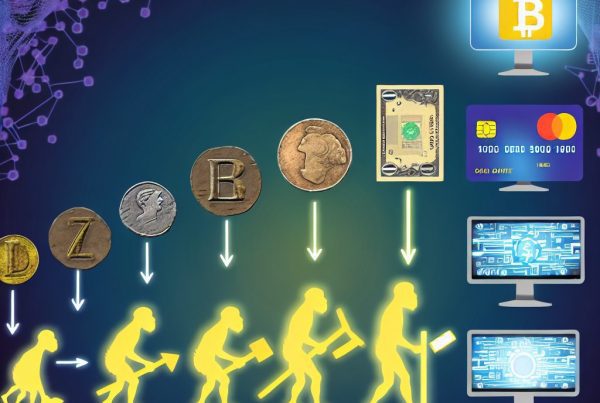What Is Proof of Work in Crypto?
In the world of cryptocurrency, the term Proof of Work (PoW) often surfaces in discussions about blockchain technology and mining. This consensus mechanism has been a cornerstone of many cryptocurrencies, most notably Bitcoin. Understanding PoW is essential for anyone looking to grasp the fundamentals of how cryptocurrencies operate, their security, and their energy consumption. This article delves into the intricacies of Proof of Work, its advantages and disadvantages, and its role in the broader cryptocurrency ecosystem.
Understanding Proof of Work
Proof of Work is a consensus algorithm used to validate transactions and secure a blockchain network. It requires participants, known as miners, to solve complex mathematical problems to add new blocks to the blockchain. This process not only secures the network but also ensures that all transactions are verified and recorded accurately.
The concept of Proof of Work was first introduced by Satoshi Nakamoto in the Bitcoin whitepaper published in 2008. The primary goal was to prevent double-spending and to create a decentralized currency that could operate without a central authority.
How Proof of Work Works
At its core, Proof of Work involves the following steps:
- Transaction Creation: Users initiate transactions, which are broadcasted to the network.
- Transaction Pool: These transactions are collected in a pool, waiting to be confirmed.
- Block Creation: Miners select transactions from the pool to form a new block.
- Solving the Puzzle: Miners compete to solve a cryptographic puzzle, which requires significant computational power.
- Block Verification: The first miner to solve the puzzle broadcasts the new block to the network for verification.
- Consensus: Other miners verify the solution and the block is added to the blockchain.
- Reward: The successful miner receives a reward, typically in the form of newly minted cryptocurrency and transaction fees.
The Role of Miners in Proof of Work
Miners play a crucial role in the Proof of Work system. They are responsible for maintaining the integrity of the blockchain by validating transactions and securing the network. The competition among miners to solve the cryptographic puzzle ensures that no single entity can dominate the network, promoting decentralization.
Mining requires substantial computational resources, leading to significant energy consumption. This has sparked debates about the environmental impact of cryptocurrencies that utilize Proof of Work, particularly Bitcoin.

Advantages of Proof of Work
Proof of Work offers several advantages that contribute to its popularity in the cryptocurrency space:
- Security: The computational power required to solve the puzzles makes it extremely difficult for malicious actors to attack the network.
- Decentralization: PoW promotes a decentralized network where no single entity has control over the blockchain.
- Proven Track Record: Bitcoin, the first cryptocurrency, has successfully utilized PoW since its inception, demonstrating its effectiveness.
Disadvantages of Proof of Work
Despite its advantages, Proof of Work has notable drawbacks:
- Energy Consumption: Mining requires vast amounts of electricity, leading to environmental concerns.
- Centralization Risks: Over time, mining has become concentrated in regions with cheap electricity, leading to potential centralization.
- Scalability Issues: The time and resources required for mining can limit the number of transactions processed per second.
Real-World Applications of Proof of Work
Proof of Work is not just a theoretical concept; it has real-world applications that demonstrate its utility and challenges. Here are some notable examples:
Bitcoin
Bitcoin is the most prominent example of a cryptocurrency that uses Proof of Work. Miners compete to solve complex mathematical problems, securing the network and validating transactions. As of 2025, Bitcoin remains the largest cryptocurrency by market capitalization, with a robust mining ecosystem.
Ethereum (Before Transition to Proof of Stake)
Ethereum initially utilized Proof of Work before transitioning to a Proof of Stake (PoS) model in 2022. During its PoW phase, Ethereum miners played a vital role in securing the network and processing transactions, similar to Bitcoin.
Litecoin
Litecoin, often referred to as the silver to Bitcoin’s gold, also employs Proof of Work. It uses a different hashing algorithm (Scrypt) to allow for faster transaction times and lower fees, making it a popular choice for smaller transactions.
The Future of Proof of Work
The future of Proof of Work is a topic of ongoing debate within the cryptocurrency community. While it has proven effective for Bitcoin and other cryptocurrencies, the environmental concerns associated with its energy consumption have led to calls for alternative consensus mechanisms, such as Proof of Stake.
Some projects are exploring hybrid models that combine PoW with other mechanisms to enhance security while reducing energy consumption. The evolution of blockchain technology may lead to new consensus algorithms that address the limitations of Proof of Work.
FAQs About Proof of Work
What is the main purpose of Proof of Work?
The main purpose of Proof of Work is to secure a blockchain network by requiring miners to solve complex mathematical problems, thereby validating transactions and preventing double-spending.
Is Proof of Work environmentally friendly?
No, Proof of Work is often criticized for its high energy consumption, which raises environmental concerns. This has led to discussions about more sustainable alternatives.
Can Proof of Work be replaced?
Yes, some cryptocurrencies have transitioned to alternative consensus mechanisms like Proof of Stake, which aim to reduce energy consumption and improve scalability.
What are some cryptocurrencies that use Proof of Work?
Notable cryptocurrencies that use Proof of Work include Bitcoin, Litecoin, and Monero.
How does mining work in Proof of Work?
In Proof of Work, miners compete to solve cryptographic puzzles. The first miner to solve the puzzle gets to add a new block to the blockchain and is rewarded with cryptocurrency.
Conclusion
Proof of Work remains a foundational element of the cryptocurrency landscape, providing security and decentralization to networks like Bitcoin. While it has its advantages, the environmental impact and scalability issues have prompted discussions about alternative consensus mechanisms. As the industry evolves, it will be interesting to see how Proof of Work adapts or is replaced by more sustainable solutions.
For the latest updates on cryptocurrency news and price tracking, consider visiting Bitrabo. Stay connected with me on social media for more insights: X, Instagram, and Threads.
Disclaimer: This article is for informational purposes only and should not be considered financial advice. Always conduct your own research before investing in cryptocurrencies.
The Crypto Watchlist of the Week 🔎
Subscribe to receive expert-curated projects with real potential—plus trends, risks, and insights that matter. Get handpicked crypto projects, deep analysis & market updates delivered to you.


